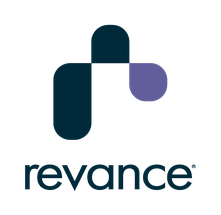For Upper Facial Lines, DaxibotulinumtoxinA Succeeds in Phase 2

Topline efficacy and safety results from the phase 2 multicenter, open-label study of Revance's investigational drug candidate DaxibotulinumtoxinA for Injection for the combined treatment of upper facial lines, show high levels of patient satisfaction.
The 36-week study enrolled 48 subjects to receive a single treatment of DaxibotulinumtoxinA for Injection. Subjects received 40, 32, and 48 units of DaxibotulinumtoxinA for Injection respectively in the glabellar complex, forehead and lateral canthal areas.
The key endpoints for efficacy, reported by Revance, were the proportion of subjects achieving a score of none or mild wrinkle severity at maximum contraction (maximum frown, eyebrow elevation, and smile effort) at week 4, as assessed on the Investigator Global Assessment Frown Wrinkle Severity (IGA-FWS), Investigator Global Assessment Forehead Wrinkle Severity (IGA-FHWS), and Investigator Global Assessment Lateral Canthal Wrinkle Severity (IGA-LCWS), respectively.
The study measured duration of effect in responders (those who achieved a score of none or mild at Week 4) as the median time to return to baseline wrinkle severity and time to loss of none or mild wrinkle severity. Both measures were based on investigator and subject assessments. Median time to return to baseline was 33 weeks for glabellar lines and 35 weeks for forehead and lateral canthal lines. Median time to loss of none or mild wrinkle severity was 25 weeks for glabellar lines, 24 weeks for forehead lines, and 28 weeks for lateral canthal lines.
DaxibotulinumtoxinA for Injection was generally safe and well tolerated when all three facial areas were injected simultaneously. There were no treatment-related serious adverse events (SAEs). The most common adverse events (AEs) were injection site erythema (6.3 percent), facial discomfort (4.2 percent) and headache (2.1 percent). No eyelid or brow ptosis was reported.
Using a 7-point Subject Global Satisfaction with Treatment Questionnaire, at week 4, 100 percent of participants reported being at least “Somewhat Satisfied” with the treatment in all three areas, and 83.0 percent, 78.7 percent, and 80.9 percent reported being “Very Satisfied” with the treatment of their glabellar lines, forehead lines, and crow’s feet, respectively.
“Many of my patients are looking for a more enduring treatment of their upper facial lines and wrinkles, as currently available neuromodulators typically only last 10 to 16 weeks, depending on the location within the face,” said study investigator Jeffrey S. Dover, MD, FRCPC, co-director of SkinCare Physicians in Chestnut Hill, MA. “I am pleased to see the high patient satisfaction scores for DaxibotulinumtoxinA for Injection and expect a treatment regimen of just two times a year could be a welcome benefit to patients looking for long-lasting treatment.”
Revance is currently awaiting a decision on the approval of DaxibotulinumtoxinA for Injection for the treatment of glabellar lines by the FDA, pending a manufacturing site inspection, which was delayed due to COVID-19 travel restrictions.

Facebook Comments